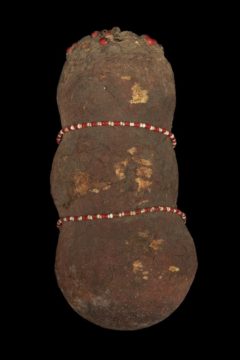University receives funding for hazardous museum collections
 A fertility doll created by the Gwembe Tonga people made from elephant dung and decorated with toxic abrus seeds is just one of the items in the University of St Andrews collections that will benefit from new funding from Museum Galleries Scotland.
A fertility doll created by the Gwembe Tonga people made from elephant dung and decorated with toxic abrus seeds is just one of the items in the University of St Andrews collections that will benefit from new funding from Museum Galleries Scotland.
Museum Galleries Scotland, the national development body for Scotland’s museum, has awarded the Museums of the University of St Andrews £56,000 to develop and understand the management of collections in their care which include hazardous substances.
Katie Eagleton, Director of Museums at the University of St Andrews, said: “We are delighted to receive this support from the Museum Development Fund towards an ambitious project to survey and more proactively manage hazardous objects in the collections.
“This will mean that we can safely open up access to more of the collections for researchers, make ambitious plans to feature objects from across our collections in exhibitions and programmes in the new Wardlaw Museum, and plan for future collections moves and storage projects.”
The fertility doll, which was collected by St Andrews anthropologist Ladislav Holý during his fieldwork in Zambia in the 1960s and 1970s, will be on display at the Wardlaw Museum, the main museum of the University of St Andrews, which opens in Spring 2020.
Issued by the University of St Andrews Communications Office.